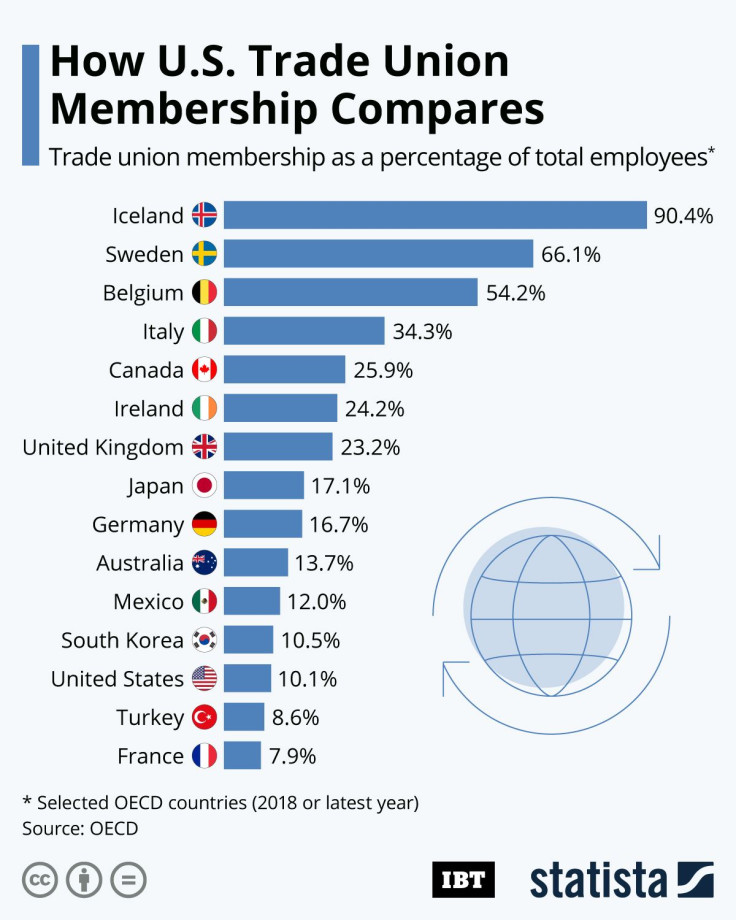Infographic: How US Trade Union Membership Compares

Amazon warehouse workers in Bessemer, Alabama are pushing to form a union and their votes are set to be counted after one of the most high-profile and consequential unionization drives in recent U.S. history. Their employer remains bitterly opposed to the move which could result in Amazon's first union within the United States. If the vote is successful, Amazon would have to enter formal negotiations with the Retail Wholesale and Department Store Union regarding a contract for the 6,000 staff members working at the facility.
Trade/labor union membership has been falling across developed nations over the past couple of decades and the trend in the U.S. is no different. The U.S. had a labor union density of 20.1 percent back in 1983 and today, that figure is less than 11 percent. Reasons for the decline include periods of economic prosperity that resulted in unions being deemed unnecessary in some quarters, technological and organizational changes, globalization, policy reform and the decline of the manufacturing sector.
Given growing economic dissatisfaction, slow growth in wages and increasing levels of inequality, there is a renewed interest in the use of trade unions for strengthening workers' collective voices and bargaining power. If progress is to be made, however, some countries are going to have a lot of work to do. Union density varies considerably between countries and Iceland had the highest rate of membership in 2018 at 90.4 percent, according to the most recent international comparison by the OECD. The Icelandic Confederation of Labour alone has 104,500 members, accounting for about half of the country's employees. Scandinavia has a long history of trade unions and Sweden had one of the world's highest rates at 66.1 percent that year.





















